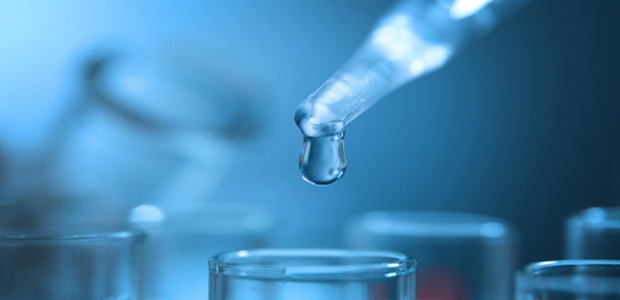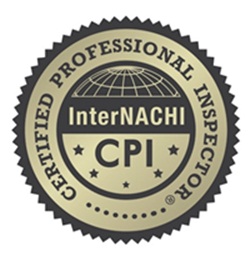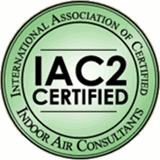Massachusetts Home Inspections YOUR INVESTMENT IS MY CONCERN

Interpreting Your Water Test

The results from your water test were emailed to you from the lab and now you’re staring at them like they’re written in a secret code. Don’t worry, you’re not alone! Interpreting lab results can feel a lot like reading a medical chart at first, but I’ve got you. Here’s a clear, simple breakdown to help you understand what your water test is really saying:
ARSENIC
Arsenic is a naturally occurring element found in rocks, soil, air, water, plants, and animals. It can enter well water through the ground or as runoff into surface water sources. Natural processes such as the erosion of rocks and forest fires, as well as human activities, can further release arsenic into the environment. In the U.S., about 90 percent of industrial arsenic is used as a wood preservative. However, it is also found in products like paints, dyes, metals, pharmaceuticals, soaps, and semiconductors. Elevated arsenic levels may also result from certain fertilizers and animal feeding operations. Industrial practices such as copper smelting, mining, and coal burning are additional sources of arsenic contamination in the environment.
Human exposure to arsenic can lead to both short- and long-term health effects. Acute effects may appear within hours or days of exposure, while chronic effects develop over years. Long-term exposure has been linked to cancers of the bladder, lungs, skin, kidneys, nasal passages, liver, and prostate. Short-term exposure to high doses can also cause serious health issues. Although potential links between arsenic and conditions such as cardiovascular disease, diabetes, and other cancers are under investigation, current evidence remains inconclusive.
The maximum level for arsenic in water is 0.010 milligrams per liter (mg/L).
CHLORIDE
Chlorides themselves do not pose direct health risks, but high levels in drinking water can indicate other underlying issues. Excessive chloride intake can negatively affect metabolism. The EPA has set a standard based on the concentration at which most people begin to detect an unpleasant salty taste. Chloride contamination is often linked to the infiltration of road salt, backwash from water softeners, or seawater intrusion into water supplies.
14 mg/L is considered normal. The maximum level for chlorides in well water is 250 mg/L
COLIFORMS
The presence of any coliform bacteria in drinking water requires immediate attention. Groundwater from a properly constructed well or spring should be free of coliform bacteria. When coliform is detected, it usually indicates that surface water has infiltrated the water source. This can occur if rain or snow runoff enters the well or spring through cracks in rock outcroppings, gravel, or sandy soil. It may also result from poor construction or damage to the well or spring casing. Contamination can happen if runoff pools around the casing, if the well or spring cover is not properly sealed, or if the pipe connecting to the house is not securely installed and sealed. Additionally, animals such as insects, snakes, mice, or other creatures may cause contamination if they gain access to the well or spring. The drinking water guidelines state drinking water should not contain more than 1 total coliform bacterium per 100 mL of water.
Your test will results will either be A=Coliform bacteria is Absent or P=Coliform bacteria is Present.
If coliform bacteria are present in drinking water, it indicates potential contamination, and immediate action should be taken to assess and address the situation.
COPPER
Copper is an essential mineral that plays a key role in the formation of red blood cells. However, excessive levels of copper in drinking water can lead to stomach aches, vomiting, or diarrhea. Young children are particularly sensitive to elevated copper levels. High concentrations of copper can also cause staining of plumbing fixtures and impart a metallic taste to the water.
The maximum level for copper in water is 1.3 mg/L
E. COLI
E. coli is a type of bacteria commonly found in the intestines of both humans and animals. It originates from human and animal waste. The full name of E. coli is Escherichia coli. During rainfall or precipitation, E. coli can be washed into creeks, rivers, streams, lakes, or groundwater. If these water sources are used for drinking water and are not properly treated—or inadequately treated—E. coli can contaminate the water supply. According to the U.S. Environmental Protection Agency, the presence of E. coli in water is a strong indicator of recent contamination from sewage or animal waste. While there are many types of E. coli, some are harmful to humans, while others are not.
Your test will results will either be A=E.Coli bacteria is Absent or P=E.Coli bacteria is Present.
If E. coli is present in your drinking water, it is a serious concern, as it indicates potential contamination from human or animal waste.
FLOURIDE
Fluoride in water can have both beneficial and harmful effects depending on its concentration. When fluoride levels exceed 1.5 parts per million, prolonged exposure during tooth development can lead to a condition known as endemic dental fluorosis, which causes dark brown staining on the teeth. In such cases, it is important to reduce fluoride levels in the water. However, recent studies have shown that low concentrations of fluoride during tooth formation can help reduce the risk of tooth decay.
Concentrations on the order of 1 part per million (ppm) are considered optimum for dental health.
HARDNESS
The main contributors to water hardness are calcium and magnesium. While these elements generally do not pose a health risk, they can accumulate on pipes, heating coils, and hot water tank components, leading to scaling. Additionally, hard water can reduce the effectiveness of detergents, cause stains, leave residues, and result in other physical issues with water-handling equipment.
The "best" water hardness level is subjective and depends on personal preferences and the intended use of the water. However, moderately hard water, typically ranging from 61-120 mg/L (3.5-7 gpg), is generally considered ideal for most household purposes.
Here's a general guideline for interpreting water hardness:
0 - 60 mg/L → Soft water
61 - 120 → Moderately hard water - IDEAL HARDNESS
121 - 180 → Hard water
181 and above → Very hard water
If your water exceeds 121 mg/L (7 gpg), you might want to consider treating it to prevent long-term damage to plumbing, appliances, and reduce soap scum. 181 mg/L (10.5 gpg) or higher typically warrants treatment to avoid more severe issues.
IRON
Iron becomes a nuisance element. It will show its presence as rust stains on water fixtures and if chlorine bleach is used in the laundry, rust spots will appear on clothes. If this happens, use non-chlorine bleach with your clothes. Common iron removal methods include ion exchange and oxidation filtration.
Average Iron level in water is 0.2 mg/L. The maximum acceptable level is 0.3 mg/L.
While levels above this may not pose significant health risks, they can lead to aesthetic issues like staining and unpleasant taste. Therefore, it's generally recommended to address iron levels above this threshold to maintain water quality.
LEAD
Lead is a highly toxic metal that poses serious health risks, particularly to infants, children, and pregnant women. High levels of lead exposure can affect the nervous system, kidneys, and red blood cells. In young children, it can impair brain development and harm the nervous system. Lead has historically been used in the production of solder, fittings, and plumbing fixtures commonly found in homes.
The maximum level for lead in water is 0.015 mg/L
If lead levels in your water are above 0.015 mg/L (15 ppb), it's important to act quickly to reduce exposure, especially if there are children, infants, or pregnant people in your household. A plumber or water specialist can help identify the sources of lead and advise on plumbing replacements, repairs or filtering.
MANGANESE
Manganese is an essential nutrient for human metabolism and typically does not pose health risks at levels commonly found in drinking water. However, elevated levels can cause water discoloration, stain clothing, sinks, toilets, and bathtubs, and produce unpleasant tastes in drinking water.
The maximum level for manganese in water is 0.05
While 0.05 mg/L is the guideline for taste and appearance, levels above 0.1 mg/L may pose health risks for infants under 6 months. Concentrations exceeding 0.3 mg/L can present potential health risks for the general population with long-term exposure.
NITRATE
Elevated nitrate levels in drinking water are associated with two known health concerns. In infants, high nitrate levels can cause methemoglobinemia, or "blue baby syndrome," a condition that reduces the blood’s ability to carry oxygen and results in a bluish skin tone. In adults, nitrates can form compounds called nitrosamines, which have been linked to cancer and may pose long-term health risks. High nitrate levels in well water may also indicate possible contamination from sources such as septic systems, animal waste, or fertilizers.
The maximum level for nitrate in water is 10.0 mg/L as nitrogen(N).
If your water has high nitrate levels, particularly above 10.0 mg/L, it’s crucial to take action immediately—especially if you have infants, pregnant individuals, or anyone with a compromised immune system in the household. Additionally, the source of the nitrate contamination should be investigated.
NITRITE
Nitrites are a salt or ester anion of nitrous acid that can occur naturally or be introduced artificially into groundwater. They often come from sources such as fertilizers through runoff, sewage, and mineral deposits. In food production, nitrites are used to cure meat products because they inhibit bacterial growth. However, when introduced into water in high levels, nitrites can promote the growth of harmful bacteria.
The maximum level for nitrate in water is 1.0 mg/L (1,000 ppb).
If nitrite levels in your water exceed this limit, it's important to take corrective actions such as using alternative water sources or installing a certified water treatment system.
PH
pH measures the acidity or alkalinity of water. Acidic water, combined with low hardness (soft water), can be corrosive to pipes, potentially dissolving lead and copper. While basic (alkaline) water itself is not typically harmful, it may have a bitter taste. Alkalinity, which is a separate measurement, indicates the water's ability to resist significant changes in pH.
The ideal pH range for drinking water is generally considered to be between 6.5 and 8.5.
Here’s a breakdown of pH levels (0-14) and their impact on your drinking water:
0 to 6.4 → Can corrode plumbing, leach metals like lead or copper, and have a metallic or sour taste.
6.5 to 8.5 → Water is generally safe, tastes good, and won’t corrode pipes or create scaling.
8.5 or higher → If your water has a pH over 8.5, it's considered alkaline. While this isn’t usually a health risk, it can cause a bitter taste, scale buildup and reduce disinfectant effectiveness.
RADON IN WATER
There is currently no finalized federal standard for radon in drinking water. In 1999, the EPA proposed a two-tiered standard: 300 pCi/L for states without a radon-in-air program, and 4,000 pCi/L for states with an active program addressing indoor radon. However, these standards were never formally adopted, and there are still no official EPA action levels for radon in water.
In Massachusetts, the Department of Environmental Protection (MassDEP) has established a guideline for radon in private well water:
Action Level: 10,000 picocuries per liter (pCi/L)
If radon concentrations in private well water meet or exceed this level, the Massachusetts Department of Environmental Protection (MassDEP) recommends taking steps to reduce radon levels by installing an aeration treatment system to effectively lower radon concentrations in your well water.
SODIUM
Sodium is an essential dietary element and naturally occurs in all water sources. However, levels can be elevated in areas near the ocean or where contamination from road salt, septic systems, or water softeners is present—especially in private wells. While sodium in drinking water is not considered a health hazard for the general population, it can be a concern for individuals on low-sodium diets. In such cases, the sodium content in water should be factored into total daily intake. High sodium levels may also give drinking water a salty or unpleasant taste and could contribute to high blood pressure in those with sodium-sensitive conditions.
32 mg/L of Sodium is considered average.
Under 20 mg/L → Ideal for people on low-sodium diets (Recommended by the EPA and American Heart Association).
20 – 60 mg/L → May be acceptable for most people, but should be monitored if you're limiting sodium intake.
Over 60 mg/L → Not recommended for sodium-restricted diets (You may want to consider treatment or using alternative drinking water.
TURBIDITY
Turbidity is a measure of how cloudy or murky water appears. It is an indicator of water quality and the effectiveness of filtration, helping to determine whether harmful microorganisms (such as viruses, parasites, and certain bacteria) are present. Higher turbidity levels are often linked to increased concentrations of these disease-causing organisms, which can lead to symptoms like nausea, cramps, diarrhea, and headaches. Additionally, elevated turbidity can cause clogged pipes and damage to water treatment equipment.
The EPA recommends that turbidity should not exceed 1 Nephelometric Turbidity Unit (NTU).
Elevated turbidity can be associated with higher levels of disease-causing microorganisms, including viruses, parasites, and bacteria. These pathogens can lead to symptoms such as nausea, cramps, diarrhea, and headaches.
VOLATILE ORGANIC COMPOUNDS
No VOCs (volatile organic compounds) should be detected in well water, under any circumstances. The presence of VOCs may indicate contamination from petroleum products, industrial solvents, or chemical byproducts. These compounds pose a potential health risk and can lead to long-term adverse health effects.
VOCs (volatile organic compounds) are gases emitted from certain solids or liquids. They comprise a large group of chemicals—numbering in the thousands—that evaporate or volatilize when exposed to air. Due to their ability to dissolve many substances, VOCs are commonly used as cleaning agents, liquefying agents in fuels, degreasers, solvents, polishes, cosmetics, drugs, and dry cleaning solutions. Concentrations of many VOCs are often significantly higher indoors—up to ten times higher—than outdoors.
VOCs are found in a variety of settings, including airports, service stations, machine shops, printing and paint shops, electronics and chemical plants, dry cleaning establishments, as well as in pesticides, building materials, furnishings, and household products. Organic solvents are present in paints, varnishes, and waxes, along with many cleaning, disinfecting, cosmetic, degreasing, and hobby products.
When VOCs are spilled or dumped, a portion will evaporate, but some typically seep into the ground. In soil, VOCs can be carried deeper by percolating rainwater or melting snow. If they reach the water table, they can persist for years, as the cool, dark, and low-bacteria environment inhibits decomposition. If the VOCs in the groundwater migrate to nearby wells, they can contaminate your drinking water.
VOC contamination in your well water is a very serious heath concern.
Here is what my clients have to say about my home inspection services:
Press F5 (on your keyboard) for additional testimonials
Hi Dave,
I was very impressed with you on Monday when we met in Peabody . I have never seen a home inspector spend 4 hours doing the most total inspection you did. And not only doing the inspection but educating your client at the same time.
I am sending you a new client, his name is Norman C. He is a good friend of mine. He is buying a house in Wenham on lake street and asked if I knew a "good" home inspector.
I have seen a lot of home inspectors over the years. The general contractor who couldn't make it on his own and thought that being a home inspector was another way of making money. But, all the while feeding his bad information along with his bad practices. David, your not that guy. I put you in the top 5% of all the home inspectors I've seen in the past 25 years. Well done!
David Carnevale
Owner 1-800-PLUNGER














